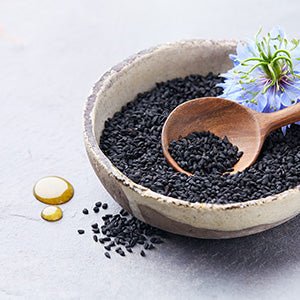How Turmeric Keeps You Looking Young

If you’ve been reading this blog for quite a while, you’re probably already familiar with the wonderful benefits and uses of turmeric.
Research on this ancient spice commonly used in Indian cooking and Ayurvedic practices continues to mount, establishing it as protective of the cardiovascular system,[1] supporter of healthy cholesterol levels,[2] and a potent free radical scavenger.[3]
Turmeric may keep you looking young, possibly slowing down the rate at which the skin ages. Is it time to start adding this yellow spice to your beauty regimen?
How Turmeric Keeps You Young
Turmeric is one of the highest antioxidant-containing spices on the ORAC scale — Oxygen Radical Absorbance Capacity. This measures the amount and activity of antioxidants in foods. Turmeric comes in at number six in the list of herbs and spices with the highest antioxidants, just under cloves (the highest) and cinnamon.[4] Antioxidants are essential for protecting the integrity of the skin by preventing free radicals from destroying its texture and elasticity.
Antioxidants also protect the skin from ultraviolet light, one of the key contributors to the visible signs of aging.[5] But don’t think that turmeric’s anti-aging power is just about the antioxidants – far from it. Research shows that turmeric inhibits a key enzyme (elastase) that reduces the ability of elastin from forming.[6] Elastin, along with collagen, is a protein needed for making the skin smooth and pliable, and also helps it to retain its original position when pinched. In fact, turmeric, in vitro, may inhibit elastase by up to 65 percent.[7]
How Turmeric Helps You Feel Young
While looking young is certainly helpful, it’s not the only piece of the puzzle. True youthfulness comes from feeling young because without energy, vibrancy, and emotional wellbeing, life can be dull and unexciting. We now know that emotions are strong determinants in how the physical body ages, so incorporating tactics to keep you mentally and emotionally well is extremely important for a high quality of life.
Turmeric's oothing properties have shown some promise recently in lifting mood, keeping the blues at bay, and helping with daily stress.[8, 9, 10] While serotonin and other brain chemicals are involved, it may also reduce redness and swelling associated with some of these issues.
How to Use Turmeric in Your Beauty Protocol
If you’re attempting to use turmeric as a skin health supplement to counter visible signs of aging, you can either use it topically or internally. As a topical adjunct to your current skin regimen, you can make a facial mask by mixing together 1 teaspoon turmeric powder with 1 teaspoon raw honey and ½ teaspoon coconut oil. Apply to the skin for 10 to 20 minutes and wash off with a natural soap. Since turmeric can stain, your skin may look yellowish for a time, so do this routine only one to two times a week at night.
You can also use a high-quality turmeric extract in liquid form for topical and internal preparations. Liquid extracts generally provide a higher concentration of antioxidants and other beneficial compounds compared with powder. I recommend Global Healing's certified organic Turmeric Raw Herbal Extract™. This superior blend is combined with Black pepper for optimal absorption.
How do you use turmeric? We’d love to hear your suggestions!
References (10)
- Wanwarang Wongcharoen, Arintaya Phrommintikul. The protective role of curcumin in cardiovascular diseases. International Journal of Cardiology. April 3, 2009, Volume 133, Issue 2, Pages 145-151.
- Idrus Alwi, Teguh Santoso, Slamet Suyono, et al. The effect of curcumin on lipid level in patients with acute coronary syndrome. Acta Med Indones. 2008 Oct;40(4):201-10.
- Sahdeo Prasad and Bharat B. Aggarwal. Turmeric, the Golden Spice. Herbal Medicine: Biomolecular and Clinical Aspects. 2nd edition.
- ORACValues. Spices, turmeric, ground. ORAC Fact Sheet.
- Fernandez-Garcia E. Skin protection against UV light by dietary antioxidants. Food Funct. 2014 Sep;5(9):1994-2003. doi: 10.1039/c4o00280f.
- Chainani-Wu N. Safety and anti-inflammatory activity of curcumin: a component of turmeric (Curcuma longa). J Altern Complement Med. 2003 Feb;9(1):161-8.
- Tamsyn SA Thring, Pauline Hili and Declan P Naughton. Anti-collagenase, anti-elastase and anti-oxidant activities of extracts from 21 plants. BMC Complementary and Alternative Medicine 2009, 9:27. doi: 10.1186/1472-6882-9-27.
- Monsey MS, Gerhard DM, Boyle LM, et al. A Diet Enriched with Curcumin Impairs Newly Acquired and Reactived Fear Memories. Neuropsychopharmacology. 2014 Nov 28. doi: 10.1038/npp.2014.315.
- Lopresti AL, Maes M, Maker GL, et al. Curcumin for the treatment of major depression: a randomised, double-blind, placebo controlled study. J Affect Disord. 2014 Oct;167:368-75. doi: 10.1016/j.jad.2014.06.001.
- Lopresti AL, Hood SD, Drummond PD. Multiple antidperessant potential modes of action of curcumin: a review of its anti-inflammatory, monoaminergic, antioxidant, immune-modulating and neuroprotective effects. J Psychopharmacol. 2012 Dec;26(12):1512-24. doi: 10.1177/0269881112458732.
†Results may vary. Information and statements made are for education purposes and are not intended to replace the advice of your doctor. If you have a severe medical condition or health concern, see your physician.

Dr. Edward Group, DC
FOUNDER | HEALER | ADVOCATEDr. Group, DC is a healer and alternative health advocate, and an industry leader and innovator in the field of natural health who is dedicated to helping others. He is a registered doctor of chiropractic (DC), a naturopathic practitioner (NP), and proud alum of Harvard Business School and MIT Sloan School of Management. Dr. Group, DC is the founder of Global Healing – a mission and vision he has shared through best-selling books and frequent media appearances. He aims to spread his message of positivity, hope, and wellness throughout the world.










